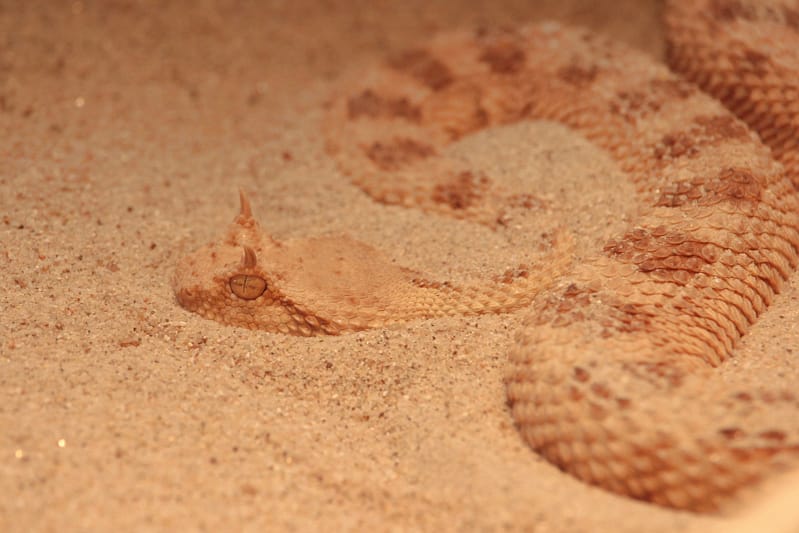How to Care for A Pet Snake?
Snakes make great pets and are a great twist on traditional pets. But before you bring home a slithery new sidekick, get all your essential supplies ready, and you will want to do some homework to see which species are best for you. No matter which snake you choose, it’s important to remember that most can live between 15 to 30 years. So make sure you are ready for a long-term commitment. Let’s dive into a blog about snakes to know how to choose one and how to care for a pet snake.
How to choose a snake as a beginner?
When choosing a snake, the most important thing to consider is how giant the snake will be when fully grown. Small snakes can live comfortably in a 20 to 40-gallon habitat and eat frozen, thawed pinky mice, while more giant snakes will need a larger space to live and eat frozen, thawed mice or rats. So as a beginner, it’s perfect to choose small-sized snakes. That will make it easy for you to care for your pet snake. Have a look at the following options for the snake to choose one, that suits you.
Corn snakes and ball pythons.
These snakes are great options for first-time snake parents. These snakes can become 4 to 6 feet long when fully grown. Baby snakes can be a bit wiggly, making them harder to hold than ball pythons.
Sand boas
These snakes are also another excellent option for new snake parents. They are calm and easy to handle. They grow to three feet long and love burrowing into their substrate, creating beautiful patterns.

Milk and King snakes
The average adult size of milk and King snakes is 2 to 6 feet long, depending on species, and they come in various colors. These snakes must be housed individually because they are aggressive toward each other. Milk and King snakes tend to be squirmy at first, so you need to hold them regularly to make them used to being handled because they can grow up to 10 feet.
Essential supplies for a pet snake’s habitat
You will want to start by setting up your snake’s habitat depending on the snake species. It’s the most important step to care for a pet snake. As there is no place like home. So that must perfectly be matching a snake’s natural habitat.
Snake terrarium:
A terrarium is a glass enclosure for snakes. It looks like a fish tank with no water in it. Make sure it is specifically made for holding snakes since young snakes can live comfortably in a 20-gallon habitat, while fully grown snakes may need more room to unwind. So choose a tank size, keeping in mind the length of a fully grown snake.
Consider a tank with a secure lid:
The pet snake’s habitat will also need a secure screen top so your snake does not escape, as they are outstanding escape artists and will likely flee without a secure lid.
Substrate for tank: Inside the habitat, spread substrate across the bottom:
Use aspen shavings, coconut fiber, or reptile dark, depending on the species that you have. Avoid using fine sand, cat litter, or dirt.

Provide a hideaway:
Snakes like to crawl into dark, enclosed spaces to feel secure. Provide a cozy shelter large enough for your snake to curl up inside. Hiding homes come in different shapes, such as rocks or hollowed-out logs. You can also make a hiding place for your snake from a plastic container, such as a clean cat litter box that works best for more giant snakes.
Choose store-bought decors:
Never put outdoor items in your habitat because they can be harmful or toxic to your pet snake.
Add climbing branches and rocks to their habitat:
Snakes known for climbing, such as corn or milk snakes, will need multiple branches and stones. If you introduce rocks or branches from outside, then make sure they are clean first.
Ensure water availability:
Add a large water dish to give your snake a place to soak and help increase the humidity levels within the habitat.
Set up the heat lamp:
As snakes are cold-blooded by nature, you must provide a heat source setup. An overhead basking lamp and an under-tank heater keep your snake at the proper temperature for that species. Never let your snake come into direct contact with a heating pad or other heating device—direct contact with a heating device can cause severe burns.
Add temperature and humidity gauges:
You will also need gauges to monitor proper temperature and humidity levels. It ensures that the conditions are optimal for the snake. If the temperature is too low, you may need an additional heating lamp or a higher-watt bulb. If the enclosure is not humid enough, you may need to place a wet towel or an extra water dish in the cage to increase the humidity or remove some water from the terrarium to lower the humidity.
Essential supplies to feed your pet snake
Buy a feeding tank and stock up on properly sized frozen rodents before your new snake moves in.
- Use the separate tank so your snake does not associate your hand or the open habitat with feeding time.
- Pet snakes eat frozen thawed rodents. You can buy them in various sizes based on your snake’s age and size.
- Younger snakes eat once or twice a week, while older snakes eat less frequently.
Note: It is best to avoid placing the “prey items” in the same freezer as your food. You may consider purchasing a small freezer where you only keep food for your snake.
What to do if your pet snake refuses to eat?
- If your snake seems to ignore the food, try wriggling it in front of its face. This may be enough to get its attention and entice your snake to eat the food.
- If the snake will still not eat the prey item, then you may need to purchase a live prey for the snake. You must watch the snake to ensure it catches and eats its live food to avoid bloody combats.
Keep the snake’s habitat clean.
Spot-clean your snake’s terrarium at least once a week and do a complete tank cleaning about once per month. Always wear gloves and goggles when cleaning the enclosure, and wash your cleaning tools and hands thoroughly because snake dwellings can house nasty bacteria, such as salmonella.
Don’t ever compromise on snakes’ health.
Pay attention to when your snake sheds its skin. If it has not cleared in a while, then take it to the veterinarian to ensure everything is okay. Other alarming signs include your snake hiding or burying itself, not eating for weeks, and having sunken eyes or a pink hue on its underside. The best thing you can do to care for your pet snake is to take it to the veterinarian.

Takeaway:
Bringing home a snake not only creates excitement and stress for you, but also for your new pet. However, with a bit of prep and proper care, your pet snake can quickly start settling right into his new home with you.
Many snakes can be tamed and socialized with regular handling. Always wash your hands before and after handling your pet reptile. And never let children under the age of 5 take a snake.
Hope you enjoy reading this blog about snakes.
For more options, look into “howtothing.net” detailed pages about care for dogs, cats, hamsters, horses, and birds to get more interesting information.
